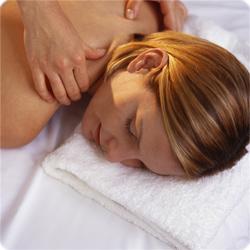“Do I have to get naked to get a massage?” This is the most common question regarding massage therapy and we have the answer for you.
We all get busy with life and forget about taking time out for ourselves. Massage therapy is one way to take better care of yourself. It’s very beneficial to your health and peace of mind, takes very little time and is not expensive. However, many people have never tried a massage and might hesitate because they don’t know what’s involved. Below are the most asked questions (and answers) about massage therapy that might persuade you to give it a try. Not sure what massage to get, read which type of massage is right for you.
1. Do I have to get naked?
Definitely not. During their training, every massage therapist learns to tell the client to undress to their level of comfort. Many clients disrobe completely, but many choose to leave on their underwear and bra. Therapists are trained to drape a sheet or blanket over the client so that private parts are covered while they work. They are also trained to be completely respectful of the client’s comfort. If you are still uncomfortable with taking anything off, you might try shiatsu massage, a Japanese style in which you remain clothes.
2. Will the massage therapist be there when I undress?
No. Once you have talked with the massage therapist, he/she will leave the room so you can remove your clothing, lie down on the massage table and cover yourself with a sheet or blanket. Also, the therapist always knocks and asks if you are ready before entering the room.
3. How much does massage cost?
Prices vary from place to place and city to city. A one-hour massage can cost $60 to $100. Most massage therapists also offer half-hour massages which range from $30 to $50 and may be a good starting point if you’ve never had a massage. You can also check out massage schools in your area. Massage therapy students will perform the work, but are supervised and normally have several hundred hours of training already. The price would, of course, be less expensive than at a spa.
4. Am I supposed to tip my massage therapist?
Tipping can vary with the setting. At a spa or hotel, a 15% to 20% tip is standard if you were pleased with the services. In a medical setting, tipping isn’t usually appropriate, but you can recommend the therapist to family and friends if you were happy with the service to show your appreciation. Don’t be afraid to ask when making your appointment if tipping is customary.
5. What qualifies a Massage Therapist to practice?
Massage therapists must attend an accredited training school and pass a board exam to become a Licensed Massage Therapist. Their training includes anatomy, physiology, biomechanics, nutrition and ethics courses. Each state has their own requirements and all therapists are licensed in their area. When you call to make an appointment, ask if the therapists are licensed.
6. Is it okay to eat or drink before a massage?
A light snack is a good idea, but a large meal can cause uncomfortable gassiness. Also, avoid drinking alcohol before a massage as this may detract from the healthful experience.
7. What if I drool during the massage?
Massage is so relaxing that you may fall into a light sleep and wake up with drool on the pillow or table. Don’t be embarrassed as this is very common. The therapist is accustomed to it and will give you a tissue.
8. How often do I need to go to feel the benefits?
A single massage can lower stress and anxiety for days and help with a particularly stressful event in your life. For people who are always under light to moderate stress (with work, family, etc.), a massage every other week will reap great benefits. For those people who have high stress due to their jobs, living conditions or who travel frequently, a massage every week is recommended.
9. What kind of massage should I ask for?
While there are more than a hundred types of massage, the four most common ones are Swedish (for relaxation and energy), deep tissue (for muscle damage from an injury), sports (for sports-related injuries and to increase flexibility) and chair (for neck, shoulders and upper back). For this last one, you keep your clothes on.
10. Are massages — and massage rooms — sanitary?
Licensed massage therapists have been trained to use sanitary conditions at all times. The massage room should look and smell clean and you should expect clean sheets on the table and uncluttered, clean floors. When you call to make an appointment, you can ask any questions you want about how they do things and this should set your mind at rest.
Hopefully all your most important questions were answered here, but if you have more, don’t hesitate to ask when you are checking out massage therapists in your area. They should be happy to give you any information you need to feel comfortable. Also, you might ask friends, family or co-workers for referrals. Or you can also try a self-massage.





